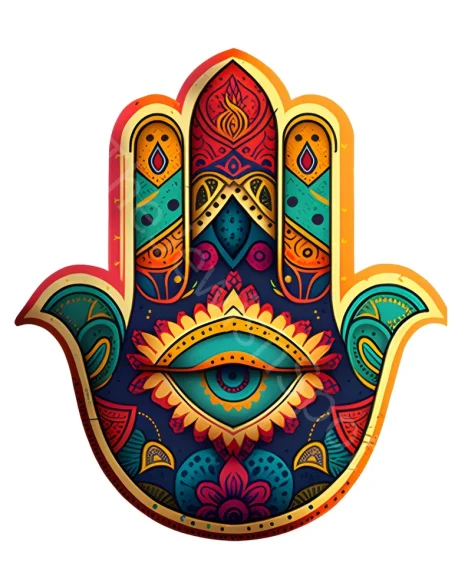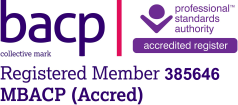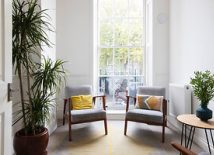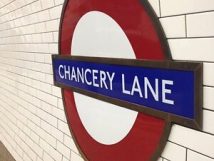London Counselling and Psychotherapy (LCaP)
Integrative Therapeutic Talking & Listening Therapy, through a Psychodynamic Lens
Accredited Counsellor and Psychotherapist with clinics in Angel N1, Islington EC1V, Holborn, Bond Street, Harley Street, Cavendish Square, Oxford Street, the West End, and Marylebone.
Face-to-face & online counselling sessions for adult individuals, couples and other relationships (family and non-traditional).


Welcome to my website
I am a qualified and accredited counsellor with clinics across Angel, Islington London, Holborn, Bond Street, Harley Street, Cavendish Square, Oxford Street, the West End, and Marylebone.
I am committed to providing counselling, psychotherapy, and talking therapy in a safe, confidential, and non-judgmental environment. I work with individuals and couples using an open-ended counsellor approach or for an agreed-upon period to enable you to enhance your life experience(s) and live them more fully.
I understand that seeking out therapy might be a difficult decision for some, but I firmly believe that when an individual makes that step, it is because they are ready for change and growth. Using my counsellor training and counsellor knowledge, I will work with you towards a better awareness of yourself and yourself in relation to those around you.
Nothing you say will shock me, and everything you say is always confidential.
Together, we will recognise and explore patterns in yourself and others, what your triggers are, and where those patterns may have originated. I do not believe in immediate fixes; rather, most issues are relational problems.
I work from clinics in Angel, Islington London, High Holborn, Holborn, Bond Street, Wimpole Street, Harley Street, Cavendish Square, Oxford Street, the West End, and Marylebone. Currently, I have availability in Islington, West End and Marylebone

It's about the relationship we have with a problem that causes us pain; how you react to a topic, person or life event that causes upset in your personal and/or professional life.
The Process for starting
The process is something like this:
- We have an initial 15-minute telephone call.
- You tell me a little bit about what is going on for you and why you have reached out for counselling and psychotherapy.
- I will tell you a bit about what I can offer you as an integrative therapist.
- If by the end of the telephone consultation we are both happy to go ahead, we move on to looking at both our diaries to agree on a weekly day/time slot for each week in person at Angel, Islington, Holborn, Bond Street, Wimpole Street, Oxford Street, the West End, and Marylebone. I also offer online counselling sessions or hybrid counselling sessions.
- I offer a once-weekly model, which can be short-term therapy or long-term therapy (open-ended).
- If you would prefer a full in-person assessment session in Angel, Islington London, Holborn, High Holborn, Bond Street, Wimpole Street, Harley Street, Cavendish Square, Oxford Street, the West End, and Marylebone, please do ask.

Couns.Dip, Cert.Psych, MBACP
My locations
I am a qualified counsellor offering face-to-face counselling and psychotherapy services in Angel Islington, Holborn, Bond Street, Wimpole Street, Harley Street, Cavendish Square, Oxford Street, the West End, and Marylebone, London.
I also offer online counselling sessions via the secure platform Zoom. Hybrid online and face-to-face counselling sessions are also available.
Fees & availability
- Adult Individual Counselling and Psychotherapy: £90 - £145 per therapeutic session (50 minutes)
- Adult Individual Counselling and Psychotherapy: more than once per week: £90 per therapeutic session (50 minutes)
- Adult Couple Counselling and Psychotherapy/ Separation Therapy: £135 - £185 per therapeutic session, depending on time of day & length of session
- Other Relationships Counselling and Psychotherapy: £135 - £185 per therapeutic session, depending on time of day and length of session
I am available for a free 15-minute conversation on the telephone for clients to discuss what they want out of therapy. Please ask about an in-person full assessment session if you prefer—in Angel, Islington London, Holborn, High Holborn, Bond Street, Wimpole Street, Harley Street, Cavendish Square, Oxford Street, the West End, and Marylebone.

Some of the issues that people search for on the internet when seeking out therapy
November 2025 (source: counselling directory)
- Depression
- Low self-esteem
- Anxiety
- Low self-confidence
- Family issues
- Trauma
- Stress
- Bereavement
- Couples therapy
- Mental health
- Feeling sad
- Loneliness
- Addiction
- LGBTQ+ counselling
- Kink aware therapy
- Childhood trauma
- Neurodiversity
- Person-centred therapy
- W1G Psychotherapy
- Social anxiety
- Anger management
- Integrative counselling
- Panic attacks
- Sex problems
- Attachment disorder
- Cognitive and behavioural therapies
- Psychodynamic therapy
- Health anxiety
- Islington Counselling
- Suicidal thoughts
- Affairs and betrayals
- Boarding school trauma
- Eating disorders
- Abuse
- Work-related stress
- Generalised anxiety disorder
- Dissociation
- Perfectionism
- Islington
- Marylebone Counselling
- Alcoholism
- Emotional abuse
- West End Counselling
- Career counselling
- Self-harm
- Sexual abuse
- Binge-eating disorder
- Psychoanalytic therapy
- Adverse childhood experiences (ACE's)

Finding a Way Back from Dissociation; A Pluralistic Reflection
When people come to see me and describe feeling “not here” — spaced out, foggy, detached — I often start by saying something like, there’s nothing wrong with you for this. Dissociation isn’t a failure; it’s something the mind does to protect us when life feels unbearable. At some point, it probably kept you safe.
It can look and feel different for everyone. For some, it’s like watching life from behind glass. For others, it’s as if the body goes numb, or time slips away. However it shows itself, I see it as the mind’s best attempt to keep going in impossible circumstances.
Many Paths, Many Meanings
From a pluralistic point of view, there’s no single explanation that fits everyone. Some people make sense of dissociation in terms of trauma or attachment. Others experience it as a kind of overwhelm, a shutting down of the system when things get too much. Some frame it spiritually, or neurologically, or simply as a habit their body learned.
My job isn’t to tell someone which story is correct, but to explore their story with them — to understand how it makes sense in the context of their life. Different meanings open different possibilities for healing, and that meaning-making belongs to the person, not to me.
How It Begins
Often, dissociation begins in situations where a person felt unsafe and had no way out — especially in childhood, but not always. If the person who was supposed to protect you was also the source of fear, the mind faced an impossible conflict. You couldn’t fight or flee, so another part of you quietly stepped aside.
For one person, that might have meant “going blank” during arguments. For another, it might have been daydreaming through loneliness, or feeling as though life was happening to someone else. However it started, it was a kind of genius: the body and mind finding a way to keep you functioning when everything felt too much.
Collaboration, Not Prescription
In pluralistic work, therapy is a shared process. Rather than me deciding what needs to happen, we talk openly about what might help, and we adapt as we go. Sometimes that means exploring the past; other times it means staying right in the present, focusing on safety and stability.
I might say, “Would it be alright if we slowed down and noticed what’s happening in your body just now?” Or, “Does it feel helpful to make sense of where this pattern might have started?” You get to decide what feels possible, and we revisit that choice often.
That spirit of collaboration is vital when working with dissociation. The last thing someone who’s felt powerless needs is a therapist who takes over. Healing grows out of shared curiosity, not expert certainty; you are the expert in you, I am just a guide to help find the way through what life has thrown your way...
Re-inhabiting the Body
Many people tell me they don’t feel much of anything in their body — or that noticing sensations feels unsafe. So, when it feels right, we explore ways to reconnect very gently.
That might be through breathing, noticing the ground underfoot, or finding something comforting to hold while we talk. Sometimes it’s about moving around the room, sometimes it’s simply sitting together in quiet awareness.
There’s no fixed sequence. The aim isn’t to make someone stay present, but to help them discover that their body can be a place of safety again. For some, that happens quickly; for others, it’s a slow unfolding. Either way, the pace is theirs.
Welcoming All the Parts
A pluralistic approach recognises that people experience themselves in many ways — different moods, voices, parts, or states. None of these is more “real” than the others.
When dissociation shows up, I try to welcome whichever part has arrived. If a person suddenly feels small and frightened, we speak to that part with care. If another part wants to keep everything light and practical, that’s welcome too. Each carries something valuable — protection, wisdom, pain, hope.
Sometimes we draw on ideas from “parts” work; sometimes we use more traditional psychodynamic reflection. The method matters less than the respect shown to every aspect of the person’s experience.
The Role of Relationship
Whatever techniques we use, the relationship remains the heart of the work. Therapy offers a chance to experience connection differently — with less fear, less pressure.
When someone drifts off in session, I don’t treat it as a problem to be fixed. I might say quietly, “I can see you’ve gone a bit far away — shall we just pause?” Or sometimes I just stay still, keeping the room calm until they begin to return. It’s the steadiness that matters — showing that I can stay with them through whatever happens.
That kind of reliability, over time, helps rebuild trust in connection itself. The person begins to learn, not through words but through experience, that being with another person doesn’t have to mean losing themselves.
Drawing from Different Traditions
Pluralistic practice invites me to draw from a range of approaches, depending on what fits best at the time.
- Psychodynamic ideas help us understand the deeper patterns — how dissociation once served a purpose in relationships.
- Somatic and grounding techniques help reconnect body and mind.
- Mindfulness and compassion-focused work offer ways to stay present without judgement.
- Attachment and relational work explores what safety and trust feel like between us.
- Trauma-informed approaches, when appropriate, help process difficult memories once stability is established.
There isn’t a single road map — more a collection of paths we might take together. What matters is finding what works for this person, in this moment.
Signs of Healing
Healing from dissociation rarely arrives in a dramatic moment. It tends to appear quietly, in small shifts: someone noticing they stayed present through a conversation that would once have sent them away; or realising they can feel sadness and still function.
Over time, the gaps between self-states begin to close. The person starts to remember, feel, and think at the same time. They might say things like, “I still drift sometimes, but I can find my way back.” That’s integration — not perfection, just connection.
It’s about becoming more at home with yourself, more able to move between your different experiences without losing who you are.
A Shared Hope
If you live with dissociation, I want to say this: you are not broken. Your mind and body did something remarkable to help you survive. The aim of therapy isn’t to erase that, but to understand it, and to help you build other ways of feeling safe now.
And we’ll do that together — checking in, adapting, trying things, pausing when needed. Because in a pluralistic view, healing isn’t something a therapist delivers; it’s something we co-create.
I’ve seen people slowly return to themselves — sometimes after years of feeling half-alive. The moment they realise they can stay present, feel safe, and still be themselves is extraordinary. It’s like watching someone come home.
That, to me, is the heart of this work: finding what helps each unique person come home to who they are — in their own time, in their own way
If you are ready to start to find out about who you are and how you got there then get in contact; slots able in Islington, Harley Street/Wimpole and the West End.
Books of interest
- Tavistock & Portman 2025 International conference on psychoanalysis and complex trauma: Collaborations and connections in uncertain times
- The Body Keeps the Score - Bessel van der Kolk
- Object relations & relationality in couple therapy - James L Poulto
- Mentalizing in Psychotherapy - Carla Sharp; Dickton Bevington and Peter Fonagy
- Existential Kink - Unmask Your Shadow and Embrace Your Power - Carolyn Elliott
- And How Does That Make you Feel? - Joshua Flethcher
- The Games People Play - Eric Berne (Transactional Analysis)
- Toxic Family: Transforming Childhood Trauma Into Adult Freedom - Susan Gold
- Psychoanalytic Ideas series - Psychosis (Madness) & Perinatal Loss & Breakdown
- Psychoanalytic theories: perspectives from developmenta psychopathology - Peter Fonagy & Mary Target
- The Unconscious at Work - Anton Obholzer
- Maybe You Should Talk to Someone - Lori Gottlieb
- From Breakdown to Breakthrough: Psychoanalytic Treatment of Psychosis - Danielle Knafo and Michael Selzer
- Kink-Affirming Practice - Culturally Competent Therapy from the Leather Chair - Stefani Goerlich
- Mad, Bad and Sad - Lisa Appignanesi
- Everyday Madness - Lisa Appignanesi
- Thinking Space: Promoting Thinking About Race, Culture and Diversity in Psychotherapy and Beyond - Tavistock Clinic - Frank Lowe
- Was it Ever Just Sex? - Darian Leader
- Dreams That Turn Over a Page: Paradoxical Dreams in Psychoanalysis - Jean-Mitchel Quinodoz
- Trauma and Recovery: The Aftermath of Violence--From Domestic Abuse to Political Terror - Judith Lewis Herman
Get in touch
Feel free to contact me if you have any questions about how counselling or psychotherapy works, or to arrange an initial assessment appointment. This enables us to discuss the reasons you are thinking of coming to counselling, whether it could be helpful for you and whether I am the right therapist to help.
You can also call/text/WhatsApp me on 07549 165 155 if you would prefer to leave a message or speak to me first. I am happy to discuss any queries or questions you may have prior to arranging an initial appointment.
All enquires are usually answered within 24 hours, and all contact is strictly confidential and uses secure phone and email services.
© John Jeremiah Ahearne
powered by WebHealer
Angel, Islington London, Holborn, Bond Street, Wimpole Street, Oxford Street, the West End, and Marylebone.
N1, EC1V, WC1V, W1, W1G, W1U, W1J, and W1R.























